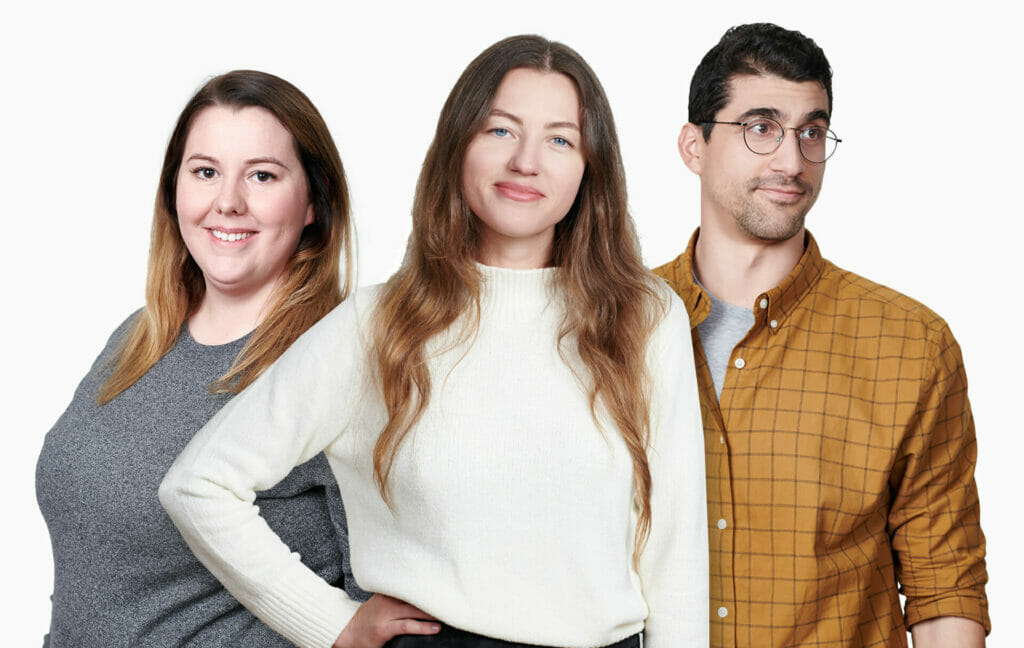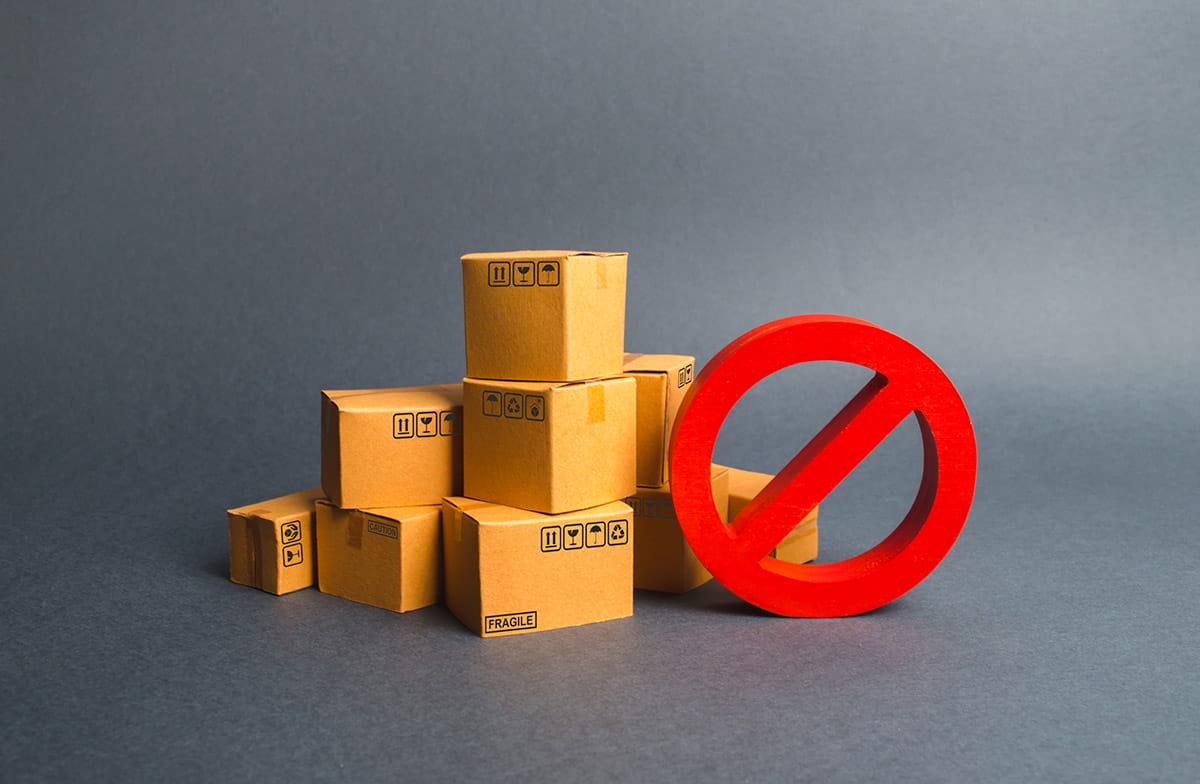Ebooks and Guides
The Definitive Guide to Online Brand Protection
- Brand Protection
Table of contents
- What is it and how can you benefit?
- Threats for brands and their customers
- What is brand protection?
- Types of brand infringement: counterfeiting
- There are many other types of brand infringement to consider
- How brand misuse has evolved
- Why do I need brand protection?
- Brand protection strategy
- Brand protection tools & features
- Why collaboration is key
- The four stages of online brand protection maturity
- The benefits of brand protection
- Corsearch’s brand protection solutions
- Download the Definitive Guide to Brand Protection

What is it and how can you benefit?
Brand protection is the act of seeking to prevent counterfeiters, copycats and other bad actors from infringing your brand illegally by using your intellectual property (IP), your brand name, brand identity and/or violate your trademarks, copyrights, patents, designs and other types of IP.
In this guide, whether you’re a business owner or work for a large company, we explain exactly how you can start the fightback through the practice of Brand Protection.
Threats for brands and their customers
Imagine your customer for a moment. Searching online. Honing in on the product they want. Cruising through the perfect, frictionless buying experience you always wanted them to have.
And then it happens. They come across that fake site or seller and they’re presented with a temptingly cheap knock off. Or even more disconcertingly – a highly convincing fake.
Whatever their reaction is, it’s one you’re not going to want. Brand infringement is a trigger for a variety of undesirable consumer emotions that are going to impact your profits, your reputation – or both.
And it doesn’t matter who you are.
Whether you’re selling luxury goods, electronics, food, NFTs or any other industry, you don’t want your brand to be anywhere near this tawdry, reputation-damaging fakery that’s diluting the strength of your brand.
If you’re selling goods at a low price point, it’s still going to hit your sales.
And it’s not just fakes you have to worry about. There’s a whole world of other issues to consider; from regulatory breaches to social media impersonators, to phishing scams that could create headlines for all the wrong reasons.
What is brand protection?
In the simplest possible terms, brand protection is the act of prevention against brand infringement.
So by engaging in Brand Protection, you are seeking to prevent someone from infringing your brand illegally by using your intellectual property and/or brand name.
But what is the ‘intellectual property’ we talk of – and is it really all that intellectual? Well no, not necessarily.
Intellectual property is simply the legal framework that covers anything you produce that is a ‘creation of the mind’ – which could be an invention, artistic work, or product.
Your intellectual property could be a thousand-page novel or a new type of plug for a sink. Or it could simply be the logos you use to represent your brands.
Types of brand infringement: counterfeiting
Counterfeiting should need little introduction. It is the manufacturing or distribution of goods under your brand name or IP rights, without your permission.
Yet there are subtle differences within the counterfeit trade that are important to define. Many counterfeiters produce knock-offs (non-identical imitation goods that do not feature branding or trademarks), for example, which are often very low quality and do not meet the criteria of what you might consider being a ‘true’ counterfeit.
True counterfeits, on the other hand, tend to be made at scale by criminal organizations. These criminal organizations often have access to materials that make their imitations very hard to differentiate from the genuine thing. They also tend to have wide distribution networks.
True counterfeiting is a much more problematic area because it makes it much more difficult for you and your consumers to see what is real and what is fake. It can also pose serious health and safety risks. Counterfeit bike helmets, for example, have been known to shatter at the slightest impact when made from inferior materials and without adherence to required industry standards.
How brand misuse has evolved
Social Commerce – the TikTok effect
The rise of abuse on social media stems from two factors: the ease of use and ability to set up accounts, and the enormous number of users that can be reached – it is estimated approximately 50% of the global population are social media users.
To illustrate the potential for brands to be misrepresented online – and how complex a challenge it is to overcome – the numbers below provide a stark reminder of the power and pervasiveness of social media platforms.
According to Business of Apps, TikTok had 1.4 billion monthly active users in 2022 (source: TikTok for Business, 2021):
- 60% of TikTok users say they follow brands on the platform.
- 52% say they search for products or shop on the platform.
- 67% say the platform’s content has inspired them to shop, even when they weren’t looking to do so.
In January 2022, TikTok shoppers were asked about their TikTok shopping habits (source: An Inside Look at Generation TikTok, 2022):
- 71.2% said they shopped when they stumbled across something in their feed, Stories, etc.
- 58% said they used the platform for shopping inspiration.
- 55% made a purchase after seeing a brand on TikTok.
Compliance
We also need to mention that brand protection also extends to the issue of compliance. This is used by brands to ensure that official resellers comply with industry standards. Compliance is particularly important if you operate in a highly regulated industry such as pharmaceuticals, where the sale goods are strictly controlled by the government and independent regulators
- Keep customers safe from physical harm
- Stay compliant
- Protect customers from fraud
- And use increased business intelligence to target infringing activity proactively
Why do I need brand protection?
We don’t really need to tell you. Ignoring these threats is not going to be a good idea – online platforms are unlikely to fight in your corner without your support and, left to their own devices, can exacerbate the problem.
You’re going to lose money. Your reputation is going to suffer. People are going to outright steal your ideas and come back and do it again.
But how do you even begin to quantify what that really means for your business – in real terms?
There’s plenty of research out there that will help you build your business case.
According to a recent study by Sapio Research, for example, 52% of US consumers say they have lost trust in a brand after unintentionally purchasing counterfeit products online.
That’s a huge potential hit to your brand.
Further Sapio research says that this lack of trust has a direct effect on buying behavior. A separate survey found that as many as 76% of consumers are less likely to buy products from a brand that is regularly associated with counterfeit goods.
The European Economic and Social Committee says that the probable overall value of trade in counterfeit products worldwide is likely to be between EUR 600 billion (UN) and close to EUR 1 trillion.
A recent report by the Organisation for Economic Co-operation and Development (OECD), meanwhile, says that the value of imported fake goods worldwide currently stands at over $500 billion annually.
Fake goods now make up 3.3% of world trade
Source: OECD and EU Intellectual Property Office, 2019
Clearly, the impact of counterfeit goods on brand value, buying habits and even wider societies and national economies is huge.
If you want to know more about the wider economic impact of counterfeiting, you can find out more in the full Sapio report.
Brand protection strategy
So enough about the challenges. What about solutions? Before you even think about the technology you are going to need, your response needs to start with a well-thought-out strategy. But what exactly should that strategy include?
IP portfolio
Firstly, if you don’t already have the expertise in-house, you need to get some good IP portfolio advice that will help you to manage and protect your IP portfolio effectively. This might include performing clearance searches to screen new brands or dealing with trademark and design registration to secure your brand in all key markets. Bottom line: you will need to manage your intellectual property by ensuring it’s fully protected against any possible local objections to maximize its potential monetary value.
Business intelligence
Secondly, you will need to set up a mechanism for data collection and gathering business intelligence. This will also need to work across many e-commerce platforms and geographies. How much do you know about where your brand is being infringed online? Which products are most affected? In which regions? And where is the most traffic going? Gathering this kind of intelligence should be the cornerstone of your Brand Protection strategy and will help you to prioritize effectively.
Prioritization and threat analysis
With this kind of information and intelligence at your disposal, it’s possible that you’re also going to feel a little overwhelmed. This means your strategy is also going to need a level of prioritization and threat analysis that will help you manage and target your IP protection and anti-piracy/anti-counterfeiting efforts effectively.
Online advertising monitoring
As part of this strategy, it may be relevant for your brand to carry out extensive online advertising monitoring. This will help you identify where your ads are shown in undesirable locations and deliver the intelligence you need to rectify it.
Social media monitoring
Social media monitoring is equally important. This is because it often reveals networks of bad sellers that spread their influence through popular social media channels. Recently, a case was recorded where the discovery of a single Instagram account promoting counterfeit goods led to the exposure of a network of 531 social media accounts. This network had a combined total of 716,645 followers, 14,143 infringing URLs and 7,138 infringing listings on online marketplaces.
Network of partners
If you want to pursue your anti-counterfeiting strategy to the fullest possible extent, you will also need to put in place a network of ‘offline’ partners (such as law enforcement or government customs agencies) that you work with to chase down the most persistent offenders.
For some brands, though not all, this course of action is likely to lead you towards IP enforcement and Brand Protection litigation. This will often be the final piece in the Brand Protection strategy for those brands who pursue it.
Brand protection tools & features
To achieve this level of brand protection, the technology you choose should include 6 key elements:
Why collaboration is key
Brand protection: better together
Businesses need have no fear of standing up to even the biggest, most corrupt criminal elements of the online world. Instead, they should stand shoulder to shoulder, fighting together to bring them down.
The internet may have made life easier for the bad guys. But ultimately, it also holds the solutions to the problem too. By leveraging Brand Protection technology, collective expertise, and shared insights, you can do something that the bad guys can’t – work together.
Internal and external collaboration is critical
You will have a number of issues to tackle and time is limited. As such, it is vital to collaborate internally – between Brand Protection teams and other stakeholders across your business and externally – between other brand owners, relevant Brand Protection organizations, and authorities. This collaboration ensures your consumers are protected and you see maximum return on investment from your Brand Protection strategy.
When targeting troublesome brand misuse — such as that perpetrated by bad actor networks — collaboration between brand owners, law enforcement, investigators, and border authorities is crucial to take effective action.

The four stages of online brand protection maturity
The precise nature of the threats a business faces will vary by sector, but – no matter which industry you’re in – there are general steps you can take to evolve your approach.
As you make this evolution, your brand protection teams become an increasingly strategic asset – able not only to counter threats, but also to identify new opportunities. In this section, we outline the four broad stages of the journey. We aim to help you recognize where your organization currently sits, the tools you can use to progress, and the practical value to be achieved by doing so. See our full Online Brand Protection Maturity Report for a deeper dive.
At a glance, the stages of brand maturity:
1. Reactive
Resources available
The truth here is often that very little time, money, and people hours are made available to focus on the challenge. For the individuals involved, brand protection also represents a small aspect of their overall role – a responsibility fighting for air time with the demands of their primary ‘day job.’
Tools
None.
Measure of success
At this stage, the only measure of success is the number of cases the team resolves (which is limited by the number they are aware of).
Goals
To deal with cases when they arise as efficiently as possible.
2. Proactive
Resources available
Dedicated time and budget is in place, but still limited and sits under the legal department, siloed from investment and collaboration elsewhere.
Tools
Search-based tools monitoring online platforms for offending accounts.
Measures of success
The number of accounts identified and taken down.
Goals
To maximize takedown volumes and efficiency using available investment.
3. Effective
Resources available
A dedicated brand protection team bolstered by improving cross-functional relationships with departments such as marketing, e-commerce, PR and supply chain.
Tools
More advanced AI and machine learning empowered tools that not only flag accounts, but also identify links between them – pointing toward the individual(s) responsible.
Measure of success
Business impact, i.e. revenue generated or protected rather than takedown volumes.
Goals
At this stage, goals are beginning to align more with those of partnering functions throughout the wider business, such as e-commerce revenue or consumer trust for marketing.
4. Progressive
Resources available
A dedicated brand protection team bolstered by crossfunctional relationships and investment from departments such as marketing, e-commerce, PR, cyber security, and supply chain, as well as the executive team. A steering committee comprising members of each area is commonly used at this stage.
Tools
As well as driving efficiency through automation, tools now deliver greater intelligence such as market insights and competitor benchmarking, acting as a source of insight for decision-makers throughout the business.
Measures of success
As well as having specific brand protection aims, the team is judged by its contribution to more general business targets.
Goals
To be a critical partner for all departments, with data and intelligence from brand protection central to business-wide strategic success.
The benefits of brand protection
Regardless of your business’ size, there is plenty of case study evidence out there that will show you how businesses of all different types benefit from brand protection technology and services, helping them to:
- Increase their revenue
- Protect their reputation
- Boost legal efficiency
Find out how some of the world’s smartest brands are using brand protection technology — from Mondelēz International gaining full visibility of their online channels, to Brompton efficiently removing counterfeit listings on multiple platforms.
The only question now is what could your business achieve?
Mark Hodgin, Chief Counsel, Global Trademarks, Mondelēz International
Corsearch’s brand protection solutions
At Corsearch, we provide advanced brand protection solutions that save time and resources by effectively enforcing intellectual property online. Our solutions help you prioritize the most critical issues, strategically eliminate them, and rapidly deliver the lasting reductions necessary to drive tangible business outcomes.
Download the Definitive Guide to Brand Protection
Get a local copy of this definitive guide to refer to in your day-to-day role and help supercharge your brand protection program.




